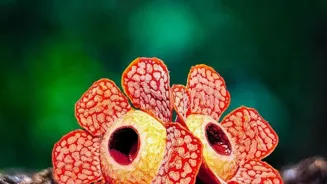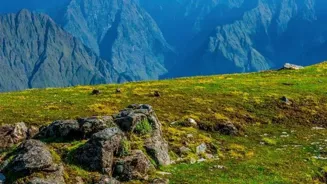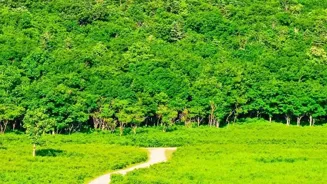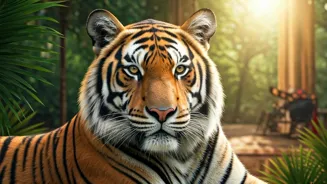Unveiling the Enigmatic Indian Pangolin: A Critical Dive into Nature's Armored Guardian. Discover its importance for ecosystems!
The Indian Pangolin, a creature shrouded in mystery and covered in scales,
is a truly unique part of India's natural heritage. Often called the 'scaly anteater' though it's not related to anteaters at all, this mammal plays a crucial role in our ecosystems.
Sadly, it's also one of the most trafficked mammals in the world, facing a serious threat to its survival. Let's delve into the amazing life of this often-overlooked animal and understand why its conservation is so important.
Indian Pangolins: unique armor of keratin scales, vulnerable to poachers
The Indian Pangolin, scientifically known as Manis crassicaudata, is found across various parts of India, from the foothills of the Himalayas to the southern tip of the country. It prefers areas with forests, grasslands, and agricultural lands, wherever ants and termites thrive.
What makes the pangolin truly unique is its armor of scales, made of keratin, the same material as our fingernails. These scales cover its entire body except for its face, belly, and the inner sides of its legs.
When threatened, the pangolin curls up into a tight ball, protecting its vulnerable underparts with its impenetrable armor. This defense mechanism, while effective against natural predators, unfortunately, makes it even more vulnerable to poachers who can easily pick up the curled-up animal.
Pangolins are nocturnal insectivores vital for ecosystem balance
Pangolins are nocturnal creatures, meaning they are most active at night. During the day, they usually hide in burrows, which they dig themselves using their strong claws. They are solitary animals, generally only coming together during the mating season.
Their diet consists almost entirely of ants and termites. They have a long, sticky tongue, which can extend up to 25 cm, that they use to lap up insects from nests and underground tunnels.
Pangolins lack teeth, so they have a muscular stomach that grinds up the insects they eat, sometimes with the help of small stones that they ingest.
A single pangolin can consume thousands of insects every day, making them natural pest controllers and vital for maintaining the balance of the ecosystem.
Indian Pangolin faces extinction due to poaching and habitat loss
The Indian Pangolin is listed as 'Endangered' on the IUCN Red List, indicating that it faces a very high risk of extinction in the wild.
The primary threat to pangolins is poaching for their scales, which are used in traditional medicine in some countries, and for their meat, which is considered a delicacy in some regions.
Despite international bans and national laws protecting pangolins, illegal trafficking continues to be a major problem. Habitat loss due to deforestation and agricultural expansion also poses a threat to their survival.
As forests are cleared, pangolins lose their homes and food sources, making it harder for them to survive.
Indian govt and NGOs work to protect pangolins through laws, awareness, and research
The Indian government has implemented several measures to protect pangolins, including strict laws against poaching and trafficking. Conservation organizations are working to raise awareness about the importance of pangolins and to combat illegal trade.
Community involvement is also crucial for pangolin conservation. By educating local communities about the importance of these animals and providing them with alternative livelihoods, we can reduce the pressure on pangolin populations.
Research is also essential to understand pangolin behavior, ecology, and population dynamics, which can help us develop more effective conservation strategies.
Protecting Indian Pangolins crucial for ecosystem health and biodiversity
Protecting the Indian Pangolin is not just about saving a single species; it's about preserving the health of our ecosystems. Pangolins play a vital role in controlling insect populations, which benefits agriculture and forestry.
By protecting pangolins, we are also protecting the many other species that depend on healthy ecosystems. We need to raise awareness about the plight of the pangolins and support conservation efforts to ensure that these amazing creatures continue to thrive in the wild for generations to come.
Every action, no matter how small, can make a difference in the fight to save the Indian Pangolin.
AI Generated Content. Glance/InMobi shall have no liability for the content











